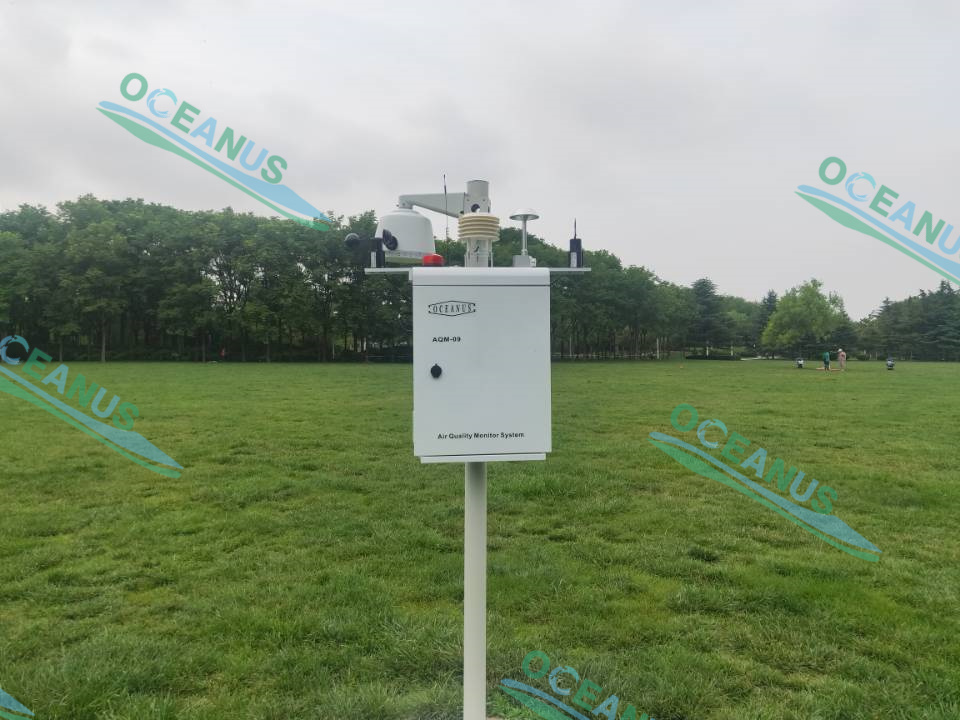How to respond in advance when Ozone pollution enters a high incidence period?
2025-6-18 View:
Summer is Coming: Proactive Measures Against Ozone Pollution
As summer is coming, ozone pollution enters a high-incidence period. Recently, many regions have begun to deploy preventive measures in advance to tackle summer ozone pollution. Ozone pollution exhibits distinct seasonal characteristics and is closely related to high temperatures and strong sunlight. It is imperative for all regions to fully recognize the urgency and importance of ozone pollution control, plan ahead, set clear timelines, and take early action to secure a "proactive victory" in ozone pollution prevention. This will effectively safeguard public health and ensure continuous improvement in ecological and environmental quality.
In recent years, China has made remarkable progress in air pollution control, with PM2.5 concentrations consistently declining. However, ozone pollution has become increasingly prominent, emerging as a major bottleneck for air quality improvement in many regions and even the primary pollutant affecting air quality in some cities.
Ozone pollution is a photochemical reaction product of nitrogen oxides (NOx) and volatile organic compounds (VOCs) under sunlight. Once formed, its mitigation often yields limited results. Therefore, taking early action to prevent ozone pollution is of great significance for ensuring stable compliance with air quality standards.
Early Action to Reduce Precursor Emissions is Key.
The precursors of ozone pollution, NOx and VOCs, originate from a wide range of sources, including industry, transportation, construction, catering, and other sectors. The extensive and scattered nature of these emissions poses significant challenges for precise ozone pollution control. All regions must act swiftly, collaborating with departments such as transportation, construction, and urban management to conduct thorough inspections. Detailed problem lists and rectification records should be established, with targeted guidance provided to address specific issues faced by enterprises. Clear responsibilities and deadlines for rectification must be set to ensure prompt resolution. This year, some regions have organized centralized maintenance and upgrades of VOCs treatment facilities for enterprises while simultaneously launching assistance programs for special air pollution control funding applications. This "technology + funding" dual-support system aims to overcome ozone control challenges.
Strengthen Regional Joint Prevention and Control.
Like PM2.5, ozone pollution also exhibits cross-regional transmission characteristics. In recent years, many regions have actively promoted the establishment of cross-regional joint prevention and control mechanisms for ozone pollution. For example, one region is set to establish a joint prevention and control mechanism for summer ozone pollution, proactively coordinating with neighboring cities to enhance synchronized analysis, early warnings, emergency emission reductions, and post-event evaluations. All regions must fully recognize the cross-regional nature of ozone pollution and prioritize the establishment of such mechanisms as a key focus for future ozone control efforts.
Enhance Forecasting and Early Warnings to Implement Peak-Shaving Measures in Advance.
Research shows that meteorological conditions significantly influence ozone formation, and timely measures can effectively reduce ozone pollution levels. For instance, one city has developed staggered production schedules for 197 VOCs-emitting enterprises to avoid high-emission activities during peak temperature hours. Real-time data analysis is used to issue high-value alerts, enabling precise control. Another city employs advanced technologies such as mobile monitoring and drone patrols to identify pollution hotspots in advance, allowing targeted measures to mitigate pollution accumulation risks.
As summer is coming, ozone pollution enters a high-incidence period. Recently, many regions have begun to deploy preventive measures in advance to tackle summer ozone pollution. Ozone pollution exhibits distinct seasonal characteristics and is closely related to high temperatures and strong sunlight. It is imperative for all regions to fully recognize the urgency and importance of ozone pollution control, plan ahead, set clear timelines, and take early action to secure a "proactive victory" in ozone pollution prevention. This will effectively safeguard public health and ensure continuous improvement in ecological and environmental quality.
In recent years, China has made remarkable progress in air pollution control, with PM2.5 concentrations consistently declining. However, ozone pollution has become increasingly prominent, emerging as a major bottleneck for air quality improvement in many regions and even the primary pollutant affecting air quality in some cities.
Ozone pollution is a photochemical reaction product of nitrogen oxides (NOx) and volatile organic compounds (VOCs) under sunlight. Once formed, its mitigation often yields limited results. Therefore, taking early action to prevent ozone pollution is of great significance for ensuring stable compliance with air quality standards.
Early Action to Reduce Precursor Emissions is Key.
The precursors of ozone pollution, NOx and VOCs, originate from a wide range of sources, including industry, transportation, construction, catering, and other sectors. The extensive and scattered nature of these emissions poses significant challenges for precise ozone pollution control. All regions must act swiftly, collaborating with departments such as transportation, construction, and urban management to conduct thorough inspections. Detailed problem lists and rectification records should be established, with targeted guidance provided to address specific issues faced by enterprises. Clear responsibilities and deadlines for rectification must be set to ensure prompt resolution. This year, some regions have organized centralized maintenance and upgrades of VOCs treatment facilities for enterprises while simultaneously launching assistance programs for special air pollution control funding applications. This "technology + funding" dual-support system aims to overcome ozone control challenges.
Strengthen Regional Joint Prevention and Control.
Like PM2.5, ozone pollution also exhibits cross-regional transmission characteristics. In recent years, many regions have actively promoted the establishment of cross-regional joint prevention and control mechanisms for ozone pollution. For example, one region is set to establish a joint prevention and control mechanism for summer ozone pollution, proactively coordinating with neighboring cities to enhance synchronized analysis, early warnings, emergency emission reductions, and post-event evaluations. All regions must fully recognize the cross-regional nature of ozone pollution and prioritize the establishment of such mechanisms as a key focus for future ozone control efforts.
Enhance Forecasting and Early Warnings to Implement Peak-Shaving Measures in Advance.
Research shows that meteorological conditions significantly influence ozone formation, and timely measures can effectively reduce ozone pollution levels. For instance, one city has developed staggered production schedules for 197 VOCs-emitting enterprises to avoid high-emission activities during peak temperature hours. Real-time data analysis is used to issue high-value alerts, enabling precise control. Another city employs advanced technologies such as mobile monitoring and drone patrols to identify pollution hotspots in advance, allowing targeted measures to mitigate pollution accumulation risks.
Ozone pollution control is another tough challenge in the field of air pollution prevention. We must plan and deploy measures early, shifting from passive response to proactive prevention, and build a strong defense before the peak season of summer ozone pollution. This will ensure the public enjoys more "blue sky happiness."
- Pre:How our Golden September Promotion helps you win in your bus 2025/9/6
- Next:New portable gas detector with inner pump 2016/4/11





